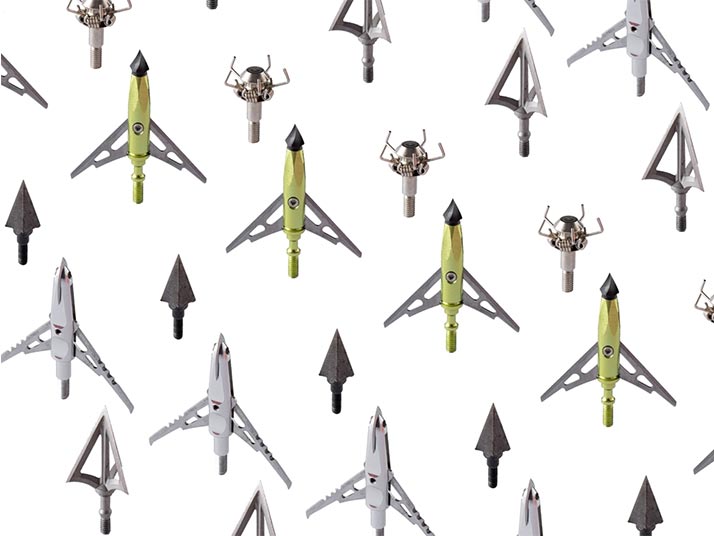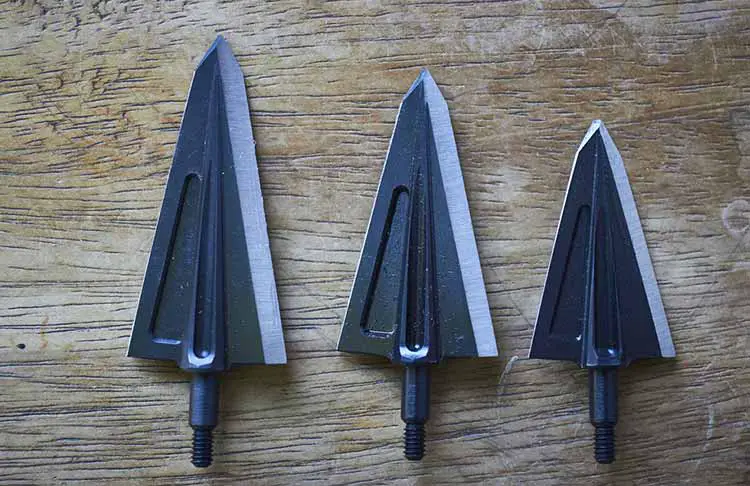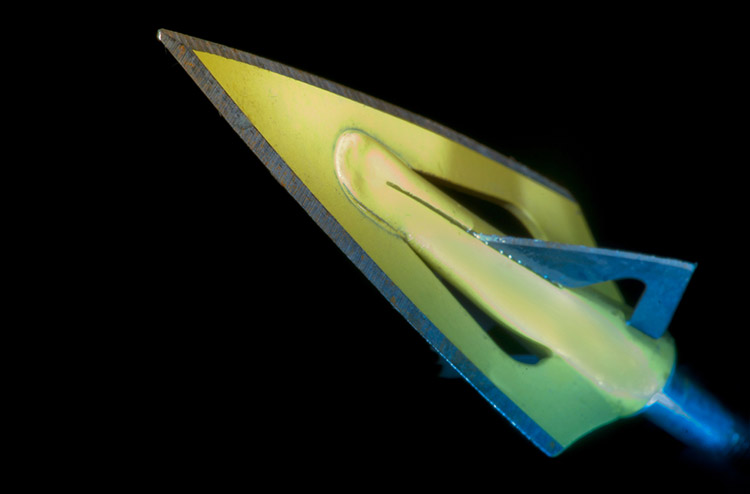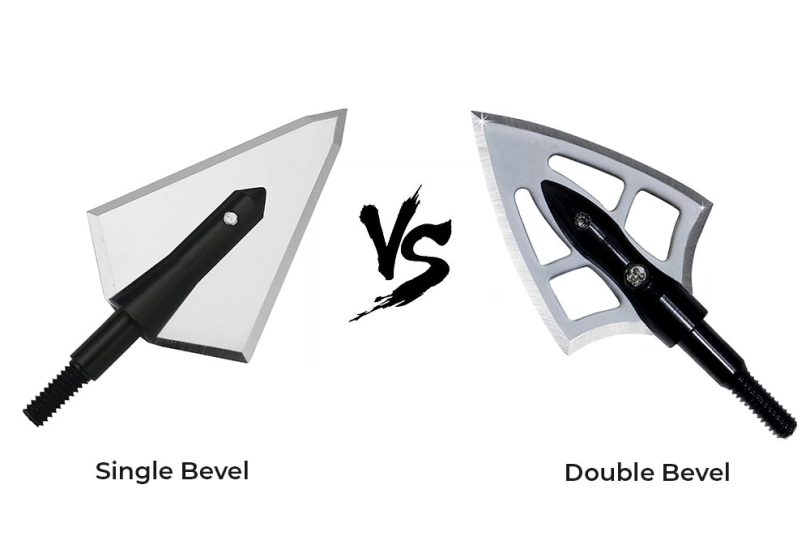When learning archery, there are many things to think about like the bow you choose and what you’ll be hunting. But something important that people often forget is what kind of broadhead to use. That is where the age-old debate of single bevel vs double bevel broadheads comes in. So, what is the difference between the two? Why should you choose one over the other?
The main difference between single and double bevel broadheads is their blade design. The blade on a single bevel broadhead is sharpened only on one side. On the other hand, the blade of the double bevel broadhead is sharpened on both sides. On double bevel heads, two sharp edges meet at the tip. This means, this type of broadhead is capable of creating a wider wound channel. Nonetheless, a single bevel broadhead can generate better penetration.
Here, you will find out the differences between the two broadheads, including the advantages and disadvantages they have to offer, the type of wound channels they create, how to choose the right one for you and much more.
What are Broadheads?

Before we dive into the differences between single bevel and double bevel broadheads, it’s important to understand what broadheads are and why they’re important.
Broadheads are the sharp tips that hunters put on the end of arrows. To have a successful and ethical hunting experience, archers and hunters need broadheads. These arrowheads are made from steel, aluminum or titanium and are meant to pierce through the animal’s skin and cause lethal harm. Unlike arrowheads used for practice, broadheads are created to cause the most harm and frequently have many blades that spread out upon impact to create a larger wound.
Single Bevel Broadheads

The blade on a single bevel broadhead is sharpened on one side and the other side is flat. Once the arrow is shot, the sharpened side of the blade will rotate around the shaft. This will create a spiral wound channel in the animal that was shot. Below are some of the single bevel broadhead advantages and disadvantages.
Advantages
- Single bevel broadheads are known for their ability to penetrate deeply into the animal being hunted. Because of the spiral wound channel their rotating blade creates, single bevel heads can cut through heavy bone and tissue better than a straight cut.
- Arrows fitted with this broadhead have a better chance of striking the desired target since they are more effective at slicing through soft tissue and thick bone. As a result, they are less likely to be diverted by impediments encountered during flight.
- Single bevel broadheads are better suited for long-range shots because their spiral rotation helps to maintain a straighter arrow trajectory, making them less susceptible to wind drift. This feature makes them highly advantageous when wind drift is a significant factor.
- These broadheads are easier to sharpen and they have the ability to maintain a sharp edge for longer periods of time compared to other broadheads.
Disadvantages
- When compared to double bevel broadhead, effectively using a single bevel broadhead demands more practice and skill. This is because the rotating blade can cause the arrow to spin. So, if the shooter is not used to it, it will affect his accuracy.
- Can be more expensive: Single bevel broadheads can be more expensive than double bevel broadheads, due to the complexity of their design and the materials used.
Double Bevel Broadheads

The blade of this broadhead is honed on both sides. This enables it to create a straight cut. Firing heavy arrows with this broadhead will cut straight through the intended target. It also creates a wider wound channel compared to a single bevel broadhead. Here are a few of the benefits and drawbacks of using a double bevel broadhead.
Advantages
- Double bevel broadheads are generally easier to use for beginners, as there is no rotating blade to contend with. The straight cut bevel broadhead cuts straight through the animal being hunted, there is less drag when shooting. This can lead to a faster and more accurate shot, particularly at longer ranges.
- They are also lightweight compared to other types of broadheads. This is because they have less mass and it also allows them to cut through the wind better.
- Double-bevel broadheads are reasonably priced and widely available at most stores.
Disadvantages
- Double bevel broadheads are not as capable as single bevel broadheads in penetrating deeply. This is because the straight cut of the blade can be deflected by bone or other obstacles, rather than cutting through them.
- Sharpening them can be a bit tiresome.
Single Bevel vs Double Bevel Broadheads: Differences in Wound Channels
When hunting, an important consideration is what type of wound channel a broadhead creates. A clean, straight cut can cause the animal to bleed out quickly, leading to a more humane and ethical kill. Here are some of the differences between the wound channels created by single bevel and double bevel broadheads:
- Single bevel: The spiral wound channel created by the single bevel broadheads can make the animal bleed out more quickly. The rotating blade of this broadhead can cut through the tissue efficiently and they are bone breaking.
- Double bevel: The double bevel broadheads generate a wider wound channel, resulting in more tissue damage and quicker kill. This leaves behind bigger blood trails. However, more blood loss can make the recovery messy.
Double Bevel vs Single Bevel Broadheads: Difference in Rotation
The single bevel broadhead has only one edge that creates a lot of spinning motion when it is flying through the air. This spinning action, combined with the helical fletching, results in a bigger wound in the target’s body.
On the other hand, a double-bevel broadhead hits the target directly without spinning, causing a different type of wound.
Choosing the Right Broadhead for You
When choosing between a single bevel vs double bevel broadheads, there are several factors to consider:
- Skill level: Single bevel broadheads require more practice and skill to use effectively. If you are a beginner or have limited experience with archery or hunting, a double bevel broadhead may be a better choice.
- Hunting style: The game type and hunting style you prefer can influence the broadhead you select. For big game, go for a single bevel broadhead that can provide deeper penetration. But if you’re after smaller prey or want a wider wound channel, a double bevel broadhead is your best bet.
- Personal preference: Ultimately, the choice of your ideal broadhead boils down to your personal preference. Some archers and hunters like the simplicity and efficiency a single bevel broadhead has to offer. On the other hand, some prefer the wider wound channel and easier-to-use design of a double bevel broadhead.
Conclusion
The single bevel vs double bevel broadheads choice will ultimately come down to your skill level, hunting style and personal preference. Choosing the right one is crucial for the success of your archery and hunting. Both have their own merits and demerits. Consider those aspects to make an informed decision. A well chosen broadhead can make a lot of difference in your hunting experience.









Leave a Comment